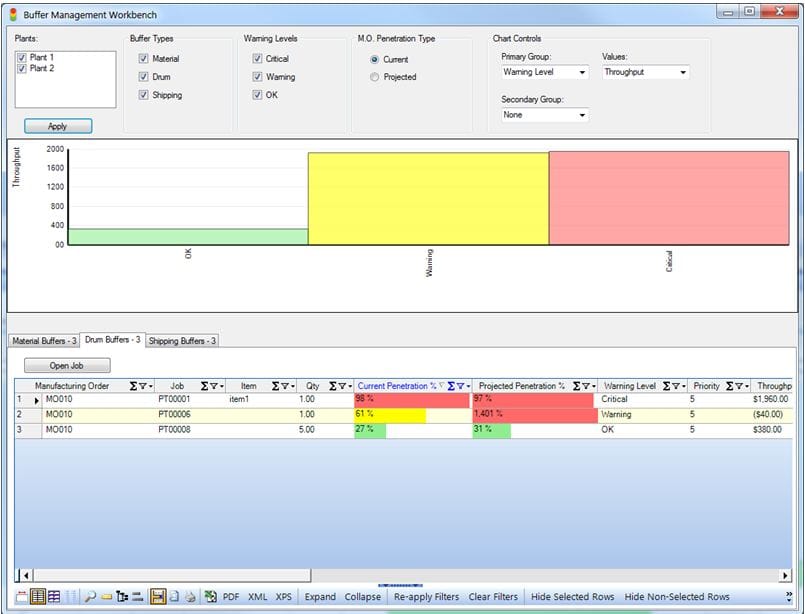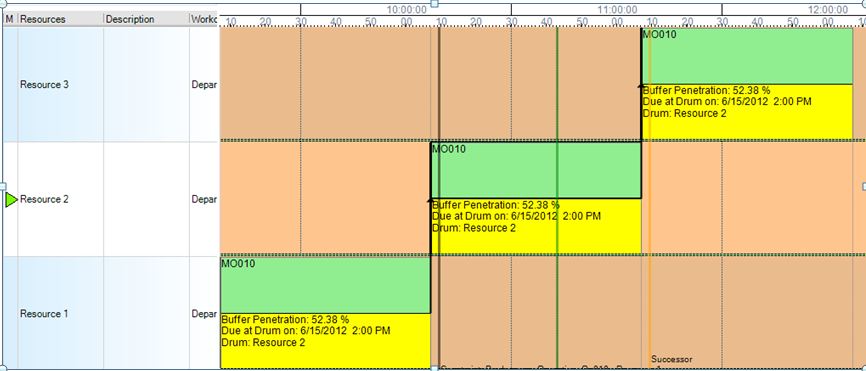How to Best Understand Buffer Stock or Buffer Inventory
Executive Summary
- A buffer stock or buffer inventory is used to account for variability in supply or demand.
- We cover the definition of buffer stock or buffer inventory as well as a buffer stock calculation.

Video Introduction: Buffer Stock or Buffer Inventory
Text Introduction (Skip if You Watched the Video)
Buffer stock or buffer inventory is a common term used in production planning and detailed scheduling, but it is not commonly used outside of manufacturing. Buffer stock allows a smooth transition between different work centers in a production line as it reduces the downtime of work centers. You will learn how buffer stock or buffer inventory applies to manufacturing planning and setting up buffer stock in software.
Our References for This Article
If you want to see our references for this article and related Brightwork articles, visit this link.
What is Buffer Stock or Buffer Inventory?
“What is buffer stock” is sometimes a question from people that don’t work in manufacturing.
Buffer Stock Definition
- Buffer stock or buffer inventory is simply stock that is between operations in a production line. The buffer is designed to allow the two resources or work centers to work well by ensuring sufficient inventory to feed the second work center.
- Buffer stock or a buffer stock location is essential when the first work center’s throughput is lower than the second work center’s performance that it is feeding.
- A Japanese concept is to reduce variability in the work centers, allowing for buffer stock to be decreased. Some Lean proponents confuse this issue and lower the buffer stock before the variability is reduced, leading to downtime for the work stations.
Buffer Stock Meaning Versus Common Stock
It is straightforward to get the buffer stock definition or buffer stock meaning confused with common stock.
However, buffer stock is a specific component of the overall stocking position designed to handle variability. In the rest of supply chain planning, this is referred to as safety stock.
When the buffer stock or buffer inventory is between work centers, it is called work in process or WIP. When the buffer stock or buffer inventory is at the distribution center, it is stock in supply chain storage.
When the buffer stock or buffer inventory is being shipped, it is stock in transit.
Buffer Stock Calculation
Buffer stock estimation is relatively easy, as it can be determined by observing the amount of stock between the work centers. However, buffer stock calculation is more complicated. It means assessing the realistic throughput for the work centers and then making up the difference by planning buffer stock in the system. To obtain the right amount of buffer stock, one must set up the production schedule to account for this.
For this reason, buffer stock usually is calculated by the production scheduling system when a company has such a system.

The vendor PlanetTogether has a buffer management workbench, where the buffer stock can be monitored.

This is the view of the buffer stock as applied to a specific resource.
*Brightwork has no financial relationship with Planet Together or any other vendor. We only show these screenshots because they happen to be reasonable explanations of how buffer stock is managed in production planning and scheduling software.
Although many companies do not have production scheduling systems and instead use spreadsheets.
The Ideal Location to Calculate Buffer Stock
Generally, spreadsheets or custom development solutions work better in production planning and scheduling if the scheduling environment is outside of discrete manufacturing — which, of course, a lot of manufacturing is.
Fitting the Software Solution to the Manufacturing Environment
We cover the issues that, for example, many production planning and scheduling applications have with process industry manufacturing scheduling in the article PP/DS Mismatches with Process Industry Manufacturing and also in the book Process Industry Manufacturing Software.

To see our analysis of various production planning and scheduling systems, see the article Software Risk Ratings (All). To view our analysis of the overall software category, see our article Production Planning and Scheduling Category Analysis.
Conclusion
In a perfect world, or where Lean consultants prefer to live, resources and work centers are perfectly matched to one another, no buffer stock or buffer inventory is necessary. However, in the real world, buffer stock is required between work centers.
Buffer stock or buffer inventory is imperative in maintaining a production line’s smooth flow and obtaining high utilization rates from each of the work centers. Buffer stock calculation can be performed to determine how to schedule the production line, which means how long each work center runs.